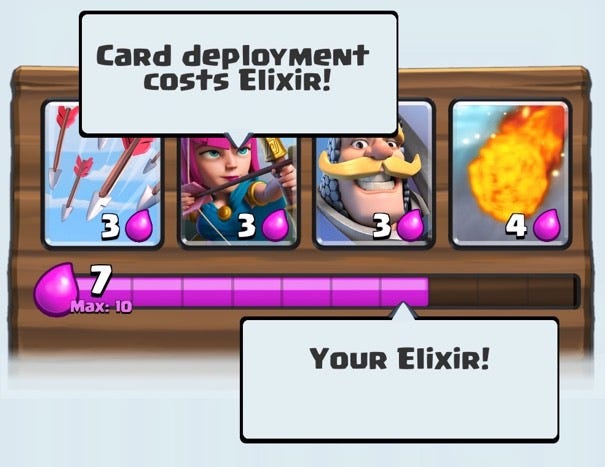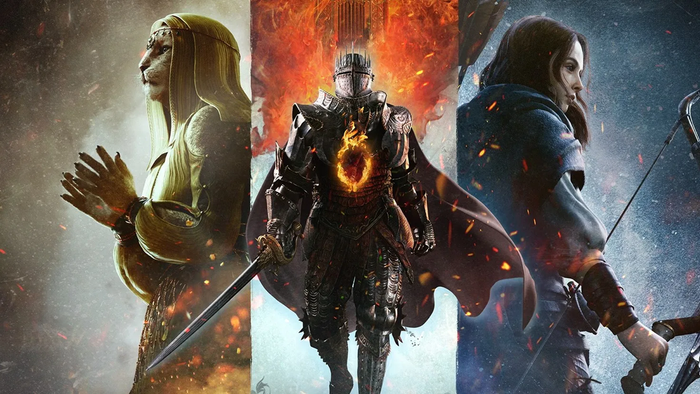When does pulse pounding tension drift into yawning tedium? Tactful inactive moments can be powerful tools for game-makers to create anticipation, but it can be difficult balancing to avoid boredom. This post looks at how this arises in Clash Royale.

Disclaimer: The views expressed in this blog are solely my own
Waiting In Vain
Many of us have experienced this: You’re playing hide-and-seek. You’re crammed in a dark closet, with just a sliver of light coming into the space from the door jamb. You can hear your friend, the other player, making their way through the area and rifling through the furniture. You try to hold your breath, as your heart races. The wait is exciting! You’re doing very little, and in fact, trying to do even less, but you’re having fun.

No one is hiding in a closet in this game of Hide and Seek (Image credit to thebackyardgnome.com)
Now, imagine the seeker happens to leave your hiding spot untouched. He decides to investigate a sound in the basement instead. As time passes, boredom sets in. What is the perfect amount of time to have the player in a holding pattern so that their excitement peaks but doesn't wane? How can a game’s mechanics and game state offer things to consider so their mind stays active during moments of inactivity or repetition? Striking the right balance in these matters is an important consideration for game designers, and something I’ve been thinking over a lot lately. This post will consider how this problem plays out in one area of Clash Royale, a current favorite game of mine.
Elixir Of Life
Clash Royale was a big hit when it went worldwide a few years ago, but in the off chance you are not familiar with it, I’ll summarize:
The game plays like a condensed moba-ccg hybrid.
It’s a PVP-focused game in which players use cards to affect a two lane map, summoning minions or casting spells onto the playing field.
To play a card during battle, you spend a resource called Elixir. This is roughly analogous to Hearthstone’s mana, but generates over time instead of turns due to the game being real-time.
The Elixir resource is the thing in which I’m particularly interested with regards to the broader question of how passivity manifests in games. This resource’s generation mechanics and the way these mechanics interact with the game’s system as a whole have an interesting impact on player behavior, especially early in the game’s meta progression.

The Clash Elixir Bar - Image credit to vulcanpost.com
Waiting Game
Management of the Elixir resource, and the idea of getting an Elixir advantage are core concepts of the game. It’s necessary to be aware of these ideas to play well and advance past a certain point. These concepts are also some of the ideas the game surfaces earliest to the player, via loading screens and player education resources linked in-game. Similar to resource concepts across CCGs, the idea is essentially: If you can remove or negate your opponent’s card with a card that costs less, you have created an elixir advantage for yourself. One example of this is using the Skeleton Army (3 Elixir) card to remove an opponent’s Giant (5 Elixir), giving you a 2 Elixir edge on your opponent. This edge can then be used to create momentum through stronger cards or more cards played in strong combinations to eventually overwhelm your opponent and destroy their towers.

A lonely 5-Elixir Giant being overwhelmed by 3-Elixir Skeleton Army (Image credit I3ored.com)
It’s important to note here that the playing field of Clash Royale is separated into two sides by a river, and with your towers on one side, and your opponents on the other. Opposing troops on your side of the river are usually within range of your towers, and will take damage from their automated fire regardless of whether or not you are playing cards. This is important because a lot of the more straightforward trades that will give you an elixir advantage are easier to execute on your side of the river because you avoid the additional damage of your opponent’s towers.

Diagram of aggro zones for the opponent's towers in Clash Royale (Image credit to Reddit)
This means, if you are holding a card that enables a multiple trades, the aforementioned Skeleton Army, for example, you can gain a significant advantage leading to a win if your opponent mistakenly plays a troop or troops that allow you to capitalize. This situation is particularly enticing for newer players because it is likely their equally inexperienced opponent would be more susceptible to err in a way that enables the trade. As you can imagine, a byproduct of this is players waiting for their opponent to make a move so that they can capitalize on one of the possible trades their hand may enable. This situation is especially exacerbated at game start, because players begin with a pool of 5 Elixir, meaning that there is a possibility for an extremely costly trade. If a player can gain a serious elixir edge from a costly early trade, they can often maintain that momentum long enough to destroy an opponent’s tower and this often results in a victory.
So, to avoid this snowball effect and try to find a trade that will yield an elixir advantage, players often sit on their cards until they have the max (10) elixir at the start of a game. This hesitance means at least 14 seconds without either player making an action, and often closer to 20 seconds (I’ve had the stalemate go as long as a minute before). The initial tension, anticipation of an exciting exchange, begins to trail off into frustration. You want to play a card but you worry it may put you at a disadvantage, either due to missing a key counter from your hand or lacking a cheap card to send to poke down a lane.
A number of players have wondered about the "feeling" that the first player has a disadvantage (credit: Reddit)
To abstract this to up to a more general game design idea, a good rule seems to be there should be just enough inactivity that the player has time to consider relevant available options in order to maintain tension. Allow to little time, and the player may feel cognitive overload. Give them too much time, and the player mentally exhausts their options or attention span and becomes bored. Avoiding unnecessary downtime may seem intuitive, but it’s worth considering how the passive moments can still be tense and even create a more engaging experience then what may have been possible with constant action. When Clash Royale games start punctually they’re a perfect example of this, and League of Legends’ laning phase is another tense exchange in which the two opponents largely play around one another, but with a perpetual threat of dynamic action.
So what, if any, adjustment could be made to Clash Royale to reduce boredom without disrupting the delicate balance of the game’s start? To be clear, the current situation isn’t a major issue. In most games, the armistice breaks when player’s elixir hits its max and players feel they can make tentative moves that lead to more committed plays. However, accelerating initial elixir generation is one adjustment that could further minimize tedium without sacrificing all of the initial tension. If Elixir generated at an accelerated rate until the first card was played, then players would reach the max amount faster, and be encouraged to more quickly break the stalemate.
What are some ways you’ve seen passive moments used artfully to create tension in games (Or when the passivity was extended too long)? If you have similar instances comment below!
Read more about:
BlogsAbout the Author(s)
You May Also Like








